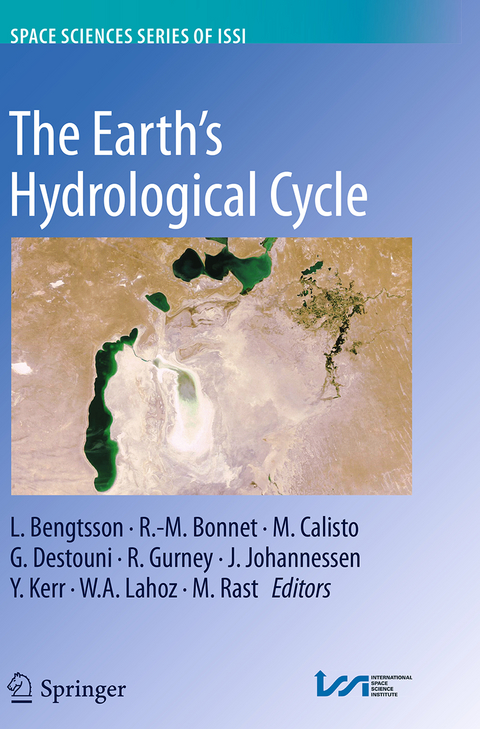
The Earth's Hydrological Cycle
Springer (Verlag)
978-94-024-0694-8 (ISBN)
This book gives a comprehensive presentation of our present understanding of the Earth's Hydrological cycle and the problems, consequences and impacts that go with this topic. Water is a central component in the Earth's system. It is indispensable for life on Earth in its present form and influences virtually every aspect of our planet's life support system. On relatively short time scales, atmospheric water vapor interacts with the atmospheric circulation and is crucial in forming the Earth's climate zones. Water vapor is the most powerful of the greenhouse gases and serves to enhance the tropospheric temperature. The dominant part of available water on Earth resides in the oceans. Parts are locked up in the land ice on Greenland and Antarctica and a smaller part is estimated to exist as groundwater. If all the ice over the land and all the glaciers were to melt, the sea level would rise by some 80 m. In comparison, the total amount of water vapor in the atmosphere is small; it amounts to ~ 25 kg/m2, or the equivalent of 25 mm water for each column of air. Yet atmospheric water vapor is crucial for the Earth’s energy balance. The book gives an up to date presentation of the present knowledge.
Previously published in Surveys in Geophysics, Volume 35, No. 3, 2014
Foreword.- Review of understanding of Earth’s hydrological cycle: Observations, theory and modeling.- Challenges in water cycle research.- Physically consistent responses of the global atmospheric cycle in models and observations.- Quantifying and reducing uncertainties in the large scale response of the water cycle.- Conceptual problems in Land Surface Data Assimilation.- Initialisation of land surface variables for Numerical Weather Prediction.- Closing the gaps in our knowledge of the hydrological cycle over land: Conceptual problems.- Toward improved estimation of the dynamic topography and ocean circulation in the high latitude and Arctic Ocean.- Sea Surface Salinity Observations from Space with SMOS satellite: a new tool to better monitor the marine branch of the water cycle.- Role of ocean in the variability of Indian summer monsoon rainfall.- Perspectives in modeling climate-hydrology interactions.- Downscaling satellite precipitation with emphasis on extremes.- Global snow mass measurements and the effect of stratigraphic detail on inversion of microwave brightness temperatures.- Glaciers in the Earth's hydrological cycle: Assessments of glacier mass and runoff changes on global and regional scales.- Observing global surface water flood dynamics.- Arctic climate and water change: Model and observation relevance for assessment and adaptation.- Irrigation effects on hydro-climatic change: Basin-wise water balance-constrained quantification and cross-regional comparison.
| Erscheinungsdatum | 23.09.2022 |
|---|---|
| Reihe/Serie | Space Sciences Series of ISSI ; 46 |
| Zusatzinfo | 12 Illustrations, color; 26 Illustrations, black and white; VIII, 409 p. 38 illus., 12 illus. in color. |
| Verlagsort | Dordrecht |
| Sprache | englisch |
| Maße | 155 x 235 mm |
| Themenwelt | Naturwissenschaften ► Biologie ► Ökologie / Naturschutz |
| Naturwissenschaften ► Geowissenschaften ► Geologie | |
| Naturwissenschaften ► Geowissenschaften ► Hydrologie / Ozeanografie | |
| Naturwissenschaften ► Geowissenschaften ► Meteorologie / Klimatologie | |
| Technik ► Umwelttechnik / Biotechnologie | |
| ISBN-10 | 94-024-0694-8 / 9402406948 |
| ISBN-13 | 978-94-024-0694-8 / 9789402406948 |
| Zustand | Neuware |
| Haben Sie eine Frage zum Produkt? |
aus dem Bereich


